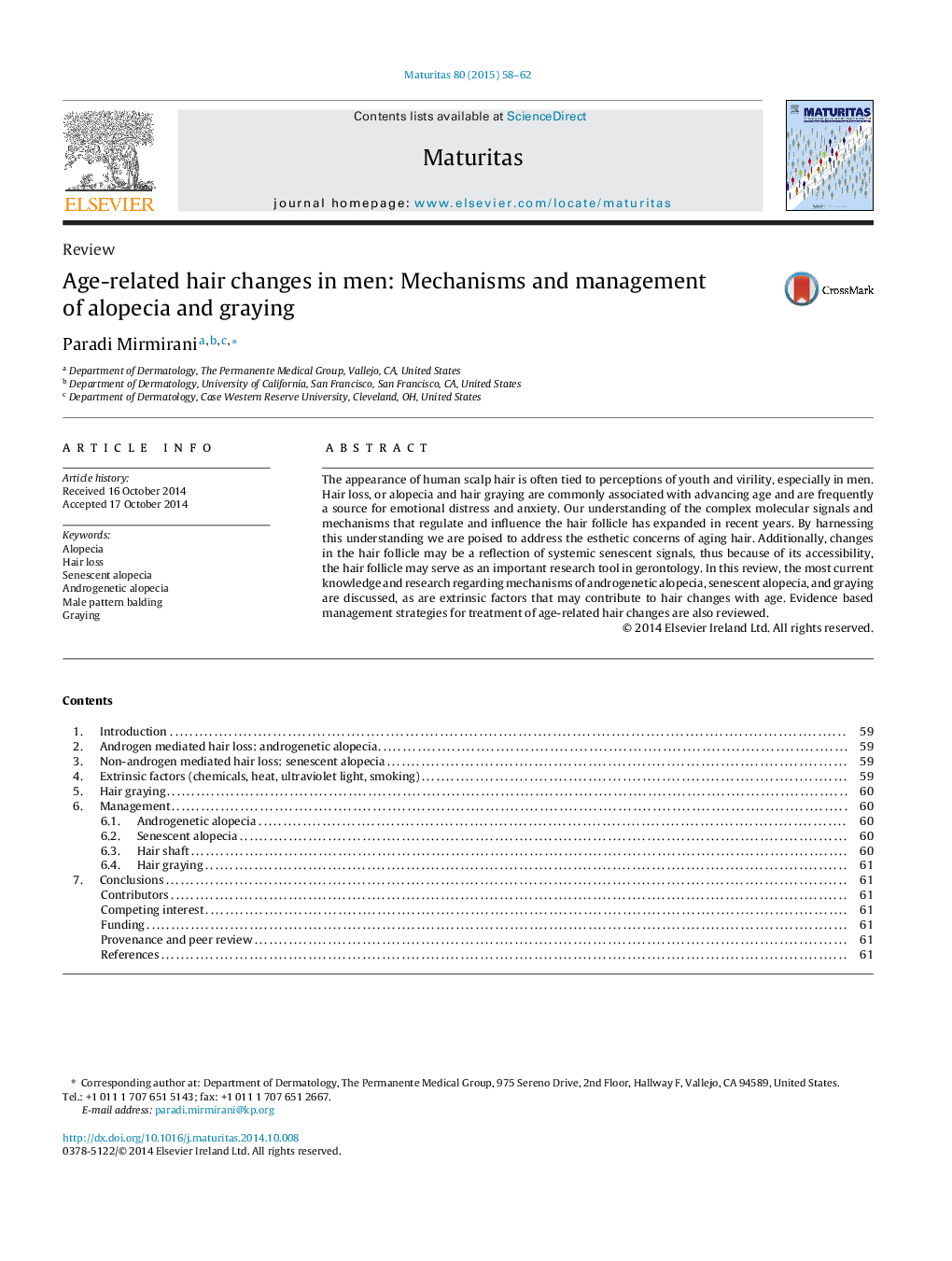| Article ID | Journal | Published Year | Pages | File Type |
|---|---|---|---|---|
| 1917139 | Maturitas | 2015 | 5 Pages |
•Androgenetic alopecia and senescent alopecia are the two main causes of thinning in men.•In androgenetic alopecia, hormonal signals lead to changes in genes regulating hair follicle size and cycling and there is a gradual diminution of the hair follicle.•In senescent alopecia, which has its onset after the age of 60, follicular dropout and thinning occur as a results of apoptosis and oxidative stress responses and may be a manifestation of systemic aging processes.•Extrinsic factors such as hair processing, ultraviolet light, and smoking have a deleterious effect on the hair.•Hair graying may reflect a decreased ability to handle oxidative damage as well as loss of follicular melanocytes and melanin content.
The appearance of human scalp hair is often tied to perceptions of youth and virility, especially in men. Hair loss, or alopecia and hair graying are commonly associated with advancing age and are frequently a source for emotional distress and anxiety. Our understanding of the complex molecular signals and mechanisms that regulate and influence the hair follicle has expanded in recent years. By harnessing this understanding we are poised to address the esthetic concerns of aging hair. Additionally, changes in the hair follicle may be a reflection of systemic senescent signals, thus because of its accessibility, the hair follicle may serve as an important research tool in gerontology. In this review, the most current knowledge and research regarding mechanisms of androgenetic alopecia, senescent alopecia, and graying are discussed, as are extrinsic factors that may contribute to hair changes with age. Evidence based management strategies for treatment of age-related hair changes are also reviewed.
